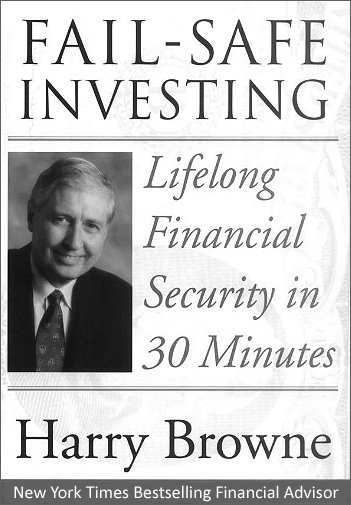The Permanent Portfolio and Silver
The Permanent Portfolio is a very well-diversified system that is used by some to safely protect their wealth. With this type of portfolio you don't have to see the future. Instead, you are so diversified that you hedge your bets against all possibilities. This is not sexy but it sure is safe!
Traditionally, the Permanent Portfolio is 25% stocks, 25% bonds, 25% gold, and 25% cash. Purportedly, it has returned over 4% on average for the last 40 years - after inflation. This article will explain the portfolio, its use, and how silver bullion can add to the diversification of this type of portfolio. U.S. residents and those with access to U.S. securities will find this useful.
I'm not a licensed stock broker. I'm not working in the financial field. I work for Oracle Inc. as a software Quality Assurance Engineer. So, be sure to do your own "due diligence" on these principles.
I did however, spend the last 5 years part-time researching all aspects of investing. I came to the following conclusion: Trading in and out of stocks, bonds, precious metals or anything is a fools game if you are not fully engaged in it. In my opinion, the permanent portfolio is the safest and best long-term portfolio for someone who is still working and has limited time to devote to financial matters.
Fail-Safe Investing
"Fail-Safe Investing" by Harry Browne is the short book that introduced the world to The Permanent Portfolio. By the way, it included many other jewels of information regarding investing. Highly recommended...
The simplicity of The Permanent Portfolio as described in this book is this:
- Have 25% of your money in the stock market. Do this by buying a broad index fund. Something that is designed to reflect the movement of the entire stock market. An example of this would be the SPDR® S&P 500® ETF (SPY).
- Have 25% of your money in the bond market. Specifically, the 30-year U.S. Treasury Bond.
- Have 25% of your money in gold, preferably gold bullion.
- Have 25% of your money in cash. This would preferably be cash in a money market fund or in short-term US treasuries so there is almost no risk.
- Once a year you re-balance your portfolio. By re-balance I mean buy or sell the assets above so that all 4 are once again 25% of your portfolio.
A more up-to-date book that covers this topic is "The Permanent Portfolio - Harry Browne's long-term investment Strategy" written by Craig Rowland and J.M. Lawson. This book is a how-to manual for putting Harry Browne's strategy into practice. This book doesn't just cover the theories behind the permanent portfolio; it also gives details for putting the theories to work in the real world.
A simple but less-safe way of investing using the permanent portfolio is to just buy all the appropriate ETFs. For instance you could buy "SPDR® S&P 500® ETF" (SPY) for stocks, "SPDR Gold Shares ETF" (GLD) for gold, "iShares 20+ Year Treasury Bond ETF" (TLT) for the 30-year bond, and the "iShares 1-3 Year Treasury Bond ETF" (SHY) for cash.
The lazy way to play your permanent portfolio is to buy the Permanent Portfolio Fund (PRPFX). Visit the http://permanentportfoliofunds.com/ site for more information. These funds are much more complicated than what I have described above. Never invest in anything you do not understand fully. Do your research, specifically, find out what the fees are.
 "Fail-Safe Investing" by Harry Browne
"Fail-Safe Investing" by Harry Browne
My own personal version of The Permanent Portfolio has only one adjustment to the four categories above. Instead of having 25% gold in my portfolio, I have 12.5% gold and 12.5% silver. I feel this gives me a slightly more diversified portfolio with basically the same dynamic. More diversification means more safety.
The Permanent Portfolio is a very well-diversified system that is used by some to safely protect their wealth. The portfolio's safety is assured by the contrasting qualities of its four investments - which ensure that any event that damages one investment should be good for one or more of the others.
The overall volatility of this portfolio is low. You are not going to get rich quick, nor will you go bankrupt quickly. In my opinion, The Permanent Portfolio is simply the best chance at wealth preservation for someone who is not willing to put a lot of time into it.

